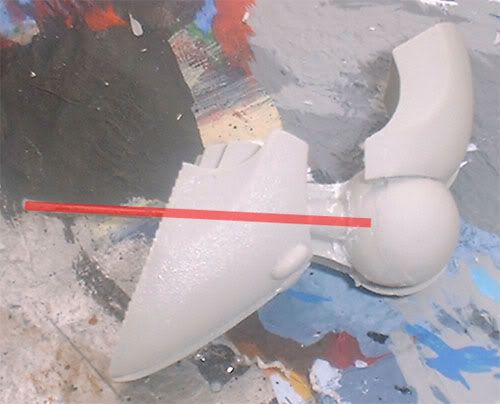There are four parts to each foot (1. the toes, 2. the mid section, 3. the ankle and 4. the heel engine). In the images below, the heel engines have not been added, but you can see it in the lead image above.
I began with the foot for the left leg. This one would be off of the ground and be in a more "relaxed" position. It also meant that it was not as critical and I could get it done quickly and easily. It would also help me get a feel for the range of motion that hte different parts could achieve. Not taking any weight and being in a relatively out of the way I decided not to pin any of the sections. In the end, quite a simple piece to complete!
The right foot was more of a problem. This one could make or break the pose and the model (figuratively and literally).
As I wanted the Revenant to be running (similar to how Forge World's own one is in the lead image), the right foot would have to support the entire model. To make this more difficult, the pose also required it to be at an angle to the leg. Anyway... one thing at a time. In order to get the angle of the leg correct, the foot needed a little more leeway than the mid section provided, so as a simple solution I flipped this bit around so the heel could end up higher and closer to the toe, allowing the lower leg to be placed at a more extreme angle than normally allowed. You can't tell the part is on backwards. Before gluing, I decided to run a large pin right the way through the foot up into the ankle. This would lock the foot to the base and provide extra strength and sturdiness.
The ankle joint would be dealt with later.





Oink, your Revenant posts are making me want to work on mine! (he's been sitting assembled on my desk since June).
ReplyDeleteIf it'll end up half as good as your horrors then we will all be in for a treat!
DeleteGreat blog you have herre
ReplyDelete